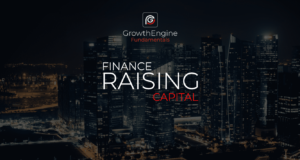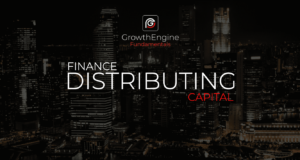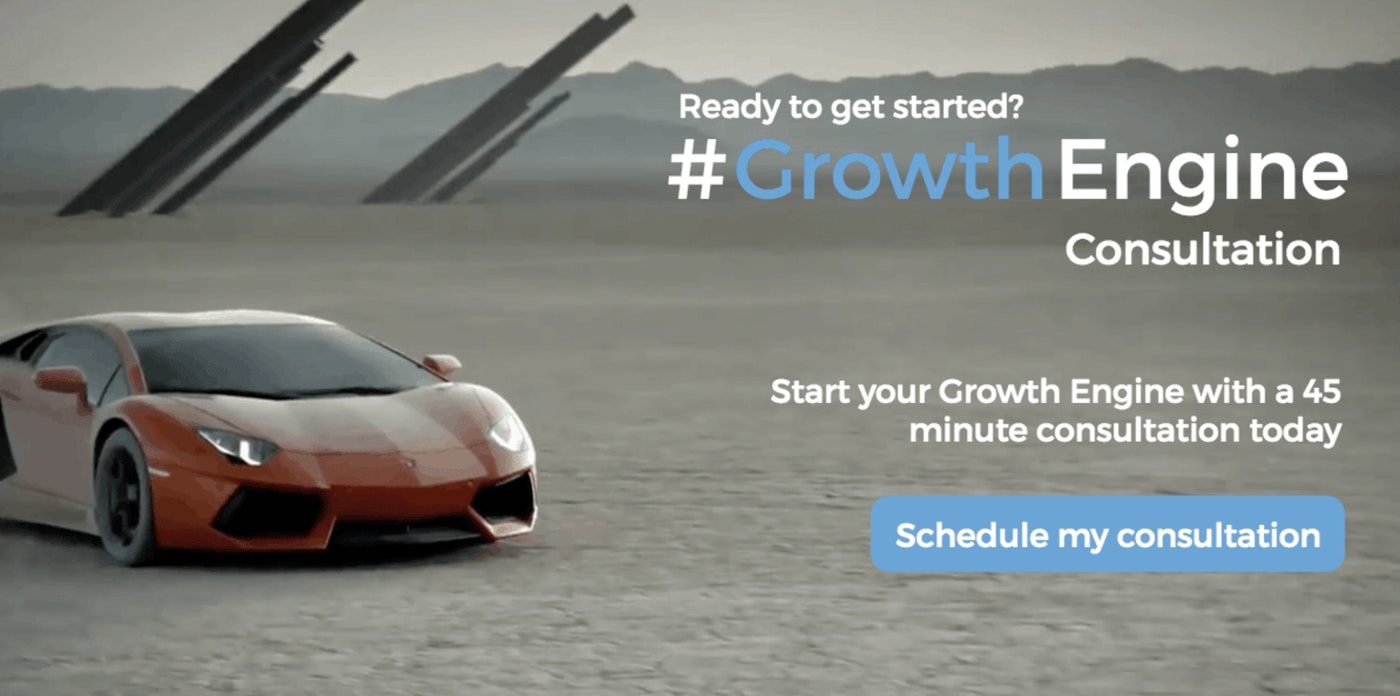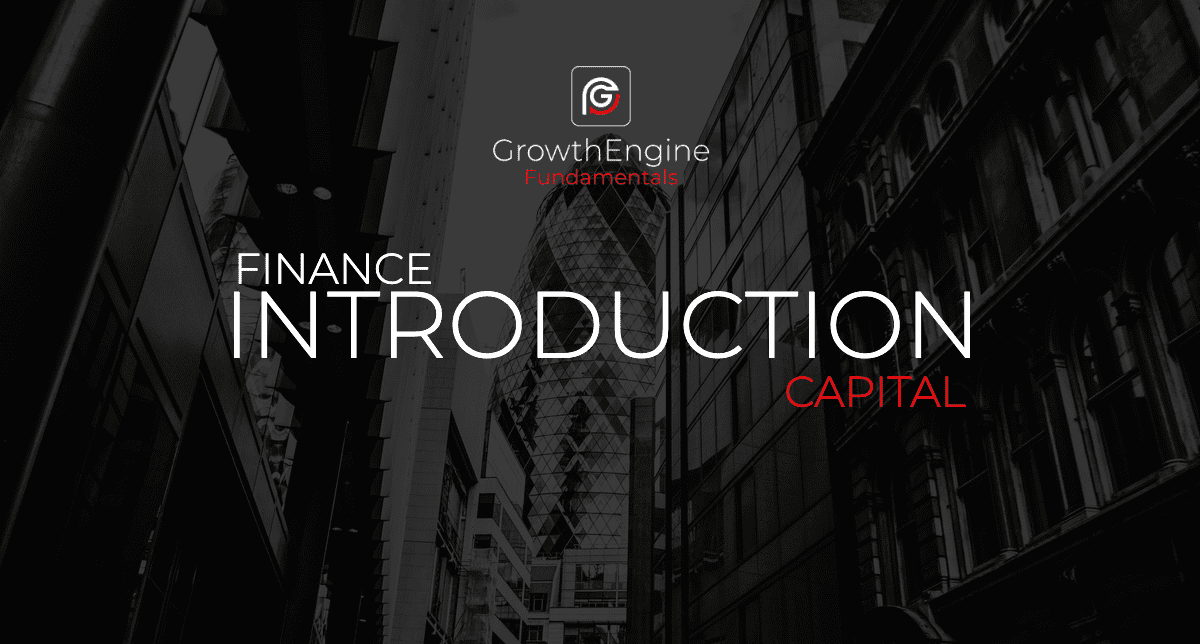
Finance Fundamentals – Introduction
Introduction
In this episode, we’re going to be speaking all about finance.
Now if you think about finance it’s in every aspect of your business, and without your business doesn’t grow and to see it very much like the blood that runs through the veins.
I’m often asked what role does the management team play and what role does finance play and a whole host of other questions.
Ultimately here’s a great little way and a little analogy that I like to think about it.
Whilst the management team is the heartbeat of the business, finance is the blood that runs through the veins.
In this video series, we’re going to be speaking in each stage about the Growth Engine fundamentals just to set the stage exactly of what we mean.
Ultimately that really falls back into two things that are very closely related which are team alignment.
Making sure that right from the top the business adopts the inbound methodology throughout the entire business model, not just the marketing area.
We’ll then move into the overview of Growth Engine Finance.
We’re going to be touching on;
- Raising Capital
- Employing Capital
- Managing Capital
- Distributing Capital
The term capital is finance or money employed and we’ll talk about this.
So that could equally say raising finance, employing finance, managing the finance and distributing finance but for this video series, we’re going to be calling it capital.
So let’s move forward and I said we’d start by setting what I call the fundamentals.
When you’re talking about Growth Engines and especially around the inbound methodology, we use the inbound flywheel which is broken up into three specific areas of Attract, Engage and Delight.
It puts the client at the centre of everything that you do.
So, if you’re going to become an inbound business, then the client has to be at the centre of everything you do.
Don’t fall into the trap of thinking that the Attract phase is just related to marketing, the Engage phase is when your sales team take over and then the Delight phase is where your customer service team manage and look after the clients once they’ve become customers and purchase.
That’s not true.
Attract, Engage and Delight phase is at every single point.
- Applies in Marketing
- Applies in Sales
- Applies in Customer Services
So when we talk about Growth Engine fundamentals, we’re going to be making references to the flywheel.
Ensuring that the client’s at the centre of everything that we do.
Now, it doesn’t really matter what type of business you are.
They’re really outside of what I call corporate governance and the law and the legislation.
So outside of that, which I’ve left out of this presentation here, there is only five segments or areas of a business and that doesn’t matter if you’re online eCommerce, you have an elongated sale, you’re in B2B, B2C, H2H.
Doesn’t really matter.
The five really are applicable and whatever you do within your business, is really going to fall into one of these five buckets.
So let’s just take a recap of these.
The five buckets or five areas are;
- Finance
- Operations
- People
- Marketing
- Sales
So, you might be sat there thinking well, where does my manufacturing team or my customer service team fit or my customer service team who are maybe on the refunds or the ones who are out there doing trade shows and things like that.
So, I’ll cover that on the next slide.
But I just really wanted to recap Growth Engine Fundamentals.
Put the client at the centre of everything that you do and even when they’re just becoming prospects before they’re even clients, they attract, engage, delight is applicable throughout the marketing, the sales, the customer service and in every single touch point that you have.
So moving this next slide forward, you can see here at the bottom, finance, operations and people really span out into what we call inbound client services.
The marketing is inbound.
Marketing and the sales of inbound sales.
I just really want to break down the point that I touched on earlier.
If you think about it the finance is what funds and fuels the business.
The people are what make it move, the actual execution of it.
That will sort of spread, people will spread into finance, like your purchase ledger clerks, your finance directors.
People spread into marketing and marketers and obviously salespeople, business development reps, sales managers, field representation, whatever you have tapping titles there.
But people always drop into operations and the way I see operations is everything from the products that you manufacture, the distribution channels that you get your goods to market whether that’s your transport division, your courier division, your customer service team, your research and development team.
So that’s really where I bundle operations in.
Ultimately if you think about it from an inbound marketing point of view, that’s bringing prospects who will eventually become customers through inbound sales.
Then inbound client services are really the fulfilment or the production or delivering what you’ve sold.
So, again it’s just getting familiar with that terminology right out of the gate
Ultimately if you think about it from that point of view, if it’s not marketed to bring people to the business and nurture it and educate them through a process, or it’s not sales that are actually engaging and helping people to bite.
Then ultimately it’s going to fall into the fulfilment that we class as inbound client services.
So, let’s get a little bit more of a high line, an overview on Growth Engine fundamentals finance.
So in the first section, we’re going to be speaking around raising capital.
For you guys out there who want to leave any questions on the blogs I’m more than happy if you want to leave a comment below, we could expand on this or if you want to send a private message maybe you’ve got some sensitive information that maybe you don’t want to put into the public blog comments, you can either connect with me on LinkedIn Mike Midgley.

Raising Capital
So what we’re trying to cover here, is about raising capital.
For businesses who are at an early stage or even established businesses who maybe want to go to the next level or even exit, these sort of points really high line and I’m just going to touch on them.
So I must stress these are not student level Bachelor degree explanations, and they are touching the outer circle.
Like with finance and any other area of business you can go down three, five, eight levels and have really granular detailed conversations.
For the purpose of these exploratory videos, this is an overview.
So when we talk about shareholders funds, we’re really talking about the capital and the equity that’s employed and the people who actually own the business.
That’s how I’m describing shareholders funds.
So, if you’re an owner-driver, you’re a one or two director team, you’re going to have some type of stakeholding or shareholding and shareholders funds.
When we talk about traditional borrowings, now that could be a private loan like a directors loan that you’ve put in, but more commonly associated with what we’d call high street working capital, loans, bank loans and overdrafts.
I haven’t got on here invoice financing or invoice discounting.
But to a degree that would also fall into traditional borrowings.
A business that’s got a need for cash, it sells goods out over a period of time.
It’s waiting to get paid because it has to provide credit terms.
So it’s either relying on cash in the bank, it’s relying on an overdraft of maybe a loan to keep the business liquid until those invoices get due for payment.
Maybe it’s accelerating those invoices through invoice financing or invoice discounting.
Employing Capital
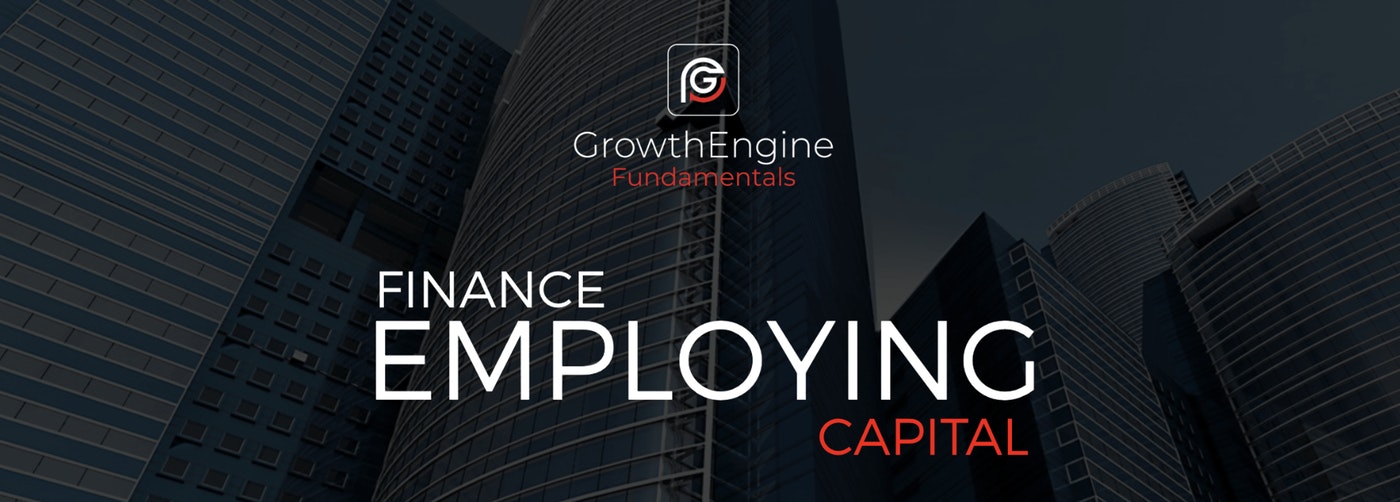
So in this one, we’re going to talk through some obvious points and some high line areas again.
We’re going to start with return on investment.
When we look at the return on investment we’re really talking about, we’re putting money into a business and wherever that’s come from as we covered in the raising capital sections irrelevant to this stage.
But if we’re putting money in, there may be some cash you’ve earned, so the business burns cash and loses money until it sort of breaks even and moves forward.
Ultimately we’re doing this because we want to return on our investment.
You will see abbreviations such as ROI.
R for Return
O for On
I for Investment
Of course.
But really the way I like to look at it is it’s a capital employed because we’re looking to acquire profit.
We’re looking for the acquisition of profit.
That can be translated to ROC or ROCI, return on capital investment.
Why would you go and put, again whether it’s one pound or a million or 10 million or 50 million into a business and not expect to at least get your money back plus a satisfactory return?
Now, when you’re employing capital, to get that return on investment it can be done at significant dilution of ways.

Managing Capital
So once we’ve employed the capital into the business, how do we best manage it?
So I’ll just go back there.
How do we best manage capital because if you just sort of pour it into the area, and are not managing it, that’s not going to get the best return?
Often one of the biggest frustrations from an investor point of view, one of the biggest frustrations from you as a business owner is when you look back and think how we wasted that money or we didn’t best use it.
Then you’ve got to go back to the bank, sort your B, C, your venture calculation, your angel and say look we did, we got this wrong.
Can we have some more money?
That becomes either more expensive.
They may not even fund you at all.
They may think you’re irresponsible, and once you will make mistakes and it’s acceptable that you make mistakes.
Then what we’re trying to do is say hey, you wouldn’t, if you got a heart condition you’re going to put a heart monitor on there.
You ‘re going to monitor that, the beats and things like that.
So capital is a resource that isn’t replaceable.
It’s not like energy a time that’s lost but it can be replaced but it can be very very costly, especially if you have to give more equity away or give more security to borrow more capital.
So, here’s a couple of overview areas that I would recommend that you have a firm handle on and there are no major surprises but you do need as you would with your;
- Business Model Strategy
- Your Sales
- Marketing Strategy
- Your People
- Recruitment Strategy
- Your Production Regulations
- Strategy
- Accounting Strategy and a Financial Infrastructure to measure that.
Distributing Capital
Now distributing capital, we are going to be talking more about capital gains, i.e. profits.
If you think about the journey, we’ve raised or invested capital, we’ve then employed that to best use, we’ve then managed that and if we’ve done a good job, it’s more than just finger in the air and a bit of luck and ultimately the market has been kind to us.
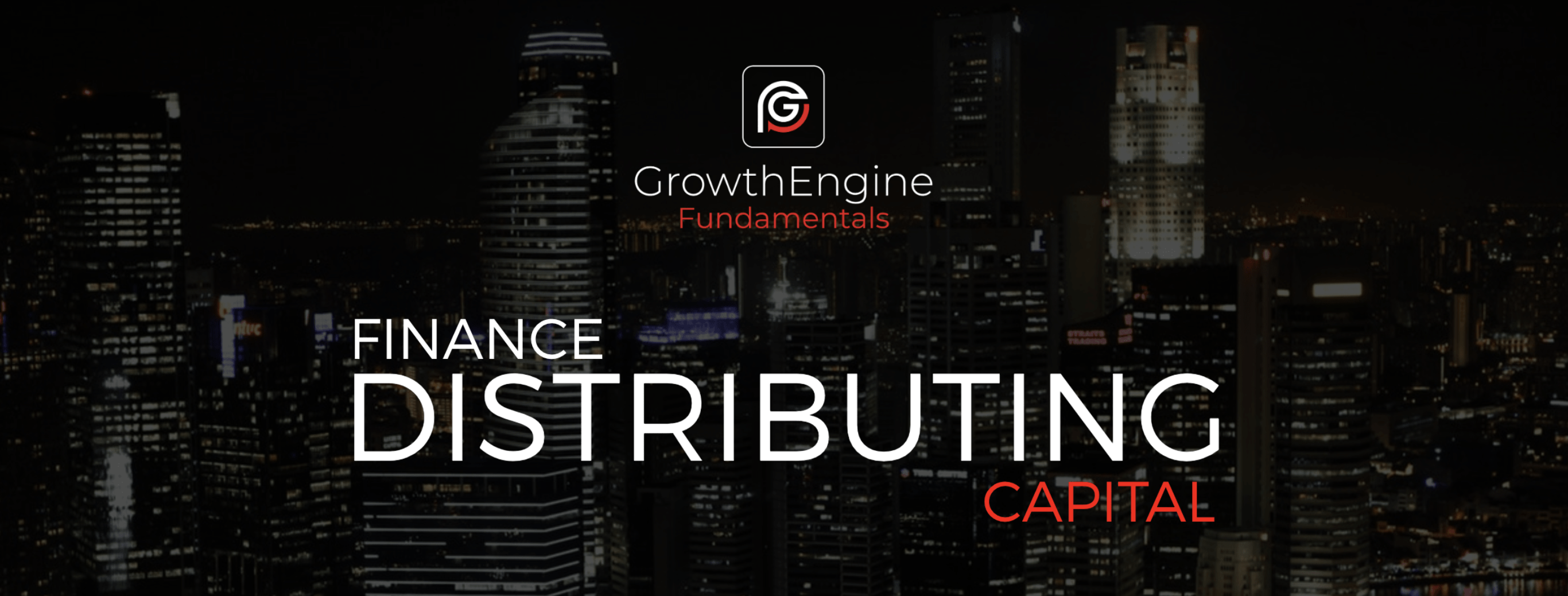
Our strategy is well sound.
Our management was true and we should be talking about a profit at the end of the day.
So I am going to cover profits post-tax.
You will see abbreviations, EBITDA, earnings before interest, tax, depreciation and amortisation.
But I am actually talking about the bottom line.
Any depreciation that’s been taken off, any taxes being taken off.
Ultimately we’re talking about the profit, the true profit and the gains that we’ve made, whether that be in a month or a quarter or a year.
I’m going to talk yearly here just because it allows me to have a broader section than just talking what profit we made today or this week or this month.
If you consistently do that over a year, this what this is relating to.
So, there is shareholders distribution.
So at the end of the year, you’ve made let’s say half a million pounds or 100,000 pounds or 50,000 pounds.
Then the shareholders, they can say okay, we’re going to award a dividend.
You may have heard that terminology around and that depends on how many shares or what percentage and what dividends per share that you’re going to give and that’s a bit of an additional reward and that’s not a tax.
So even though we are talking profits post-tax, that’s post-tax from the corporation tax point of view.
Any dividends that you pay yourself are going to need to be taxed and your tax return or whatever it would be, so you would have to pay additional tax.

There’s no sales pitch from us.
One of our Growth Engine inbound pro’s is going to sit down and they’re really looking at three things.
Where you’re at as a business, they’re going to learn about your business, they’re going to see if we’re really a good fit and you’ve got problems or challenges or pain points or aspirations that we can help with.
The worst thing if you come off the call, you’ll have had some free solid tips.
And then if that’s something that works well we can set up some further 45-minute sort of what we call discovery calls and meetings to really dig deep with that.
And if you want to take advantage of that, literally click the let’s talk button on this page, or you can head over to any page on https://mikejmidgley.com/ for everything.
Including details about Growth Engines and what we do from there. So that wraps up our Growth Engine Fundamentals on Introduction to Finance.
As I say to wrap, if you want to shoot over to Twitter and use #AskTheAgency or #GrowthEngine ask us any questions.
We’ll get those answered for you.
Alternatively, leave us a comment below on the blog.
If you’re watching this on the YouTube channel and want to know what the blog address is, it’s https://mikejmidgley.com/
So that’s https://mikejmidgley.com/
You can head over there and as always to Get In The Game, Go Do The Hustle, Go Make It Happen and we’ll catch up with you on a Growth Engine Fundamental real soon.
If you’d like to check out the rest of the Growth Engine finance fundamentals series, select an article below





